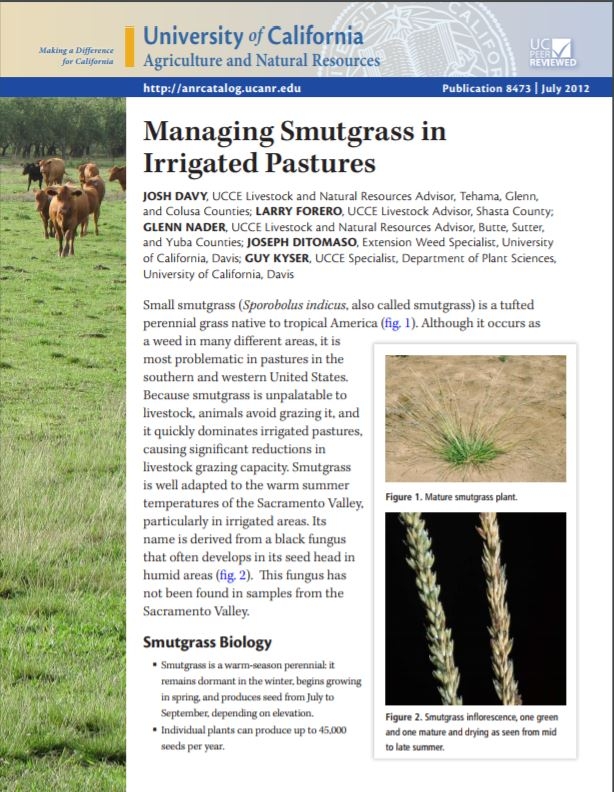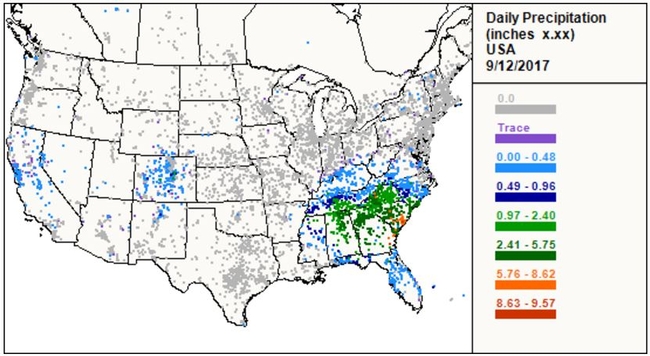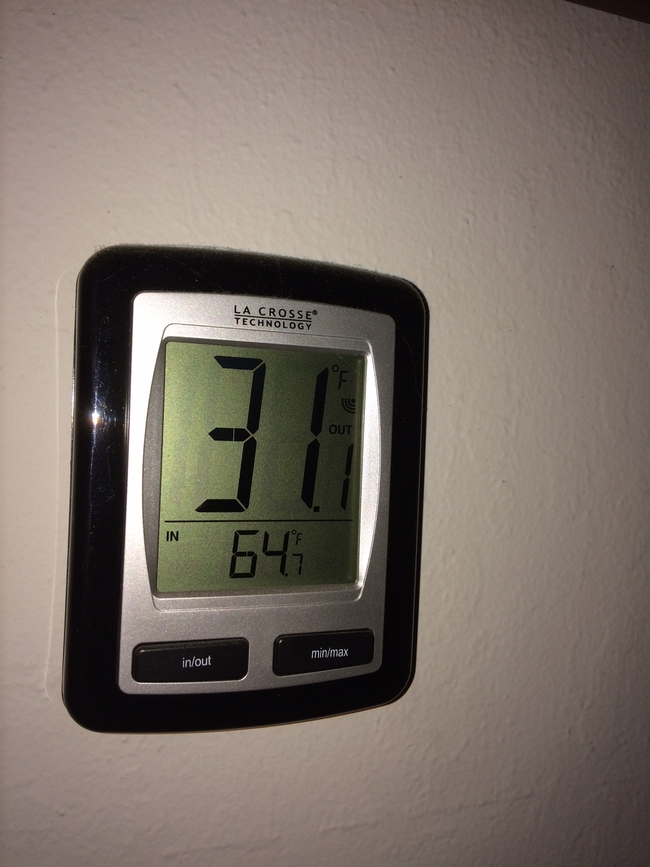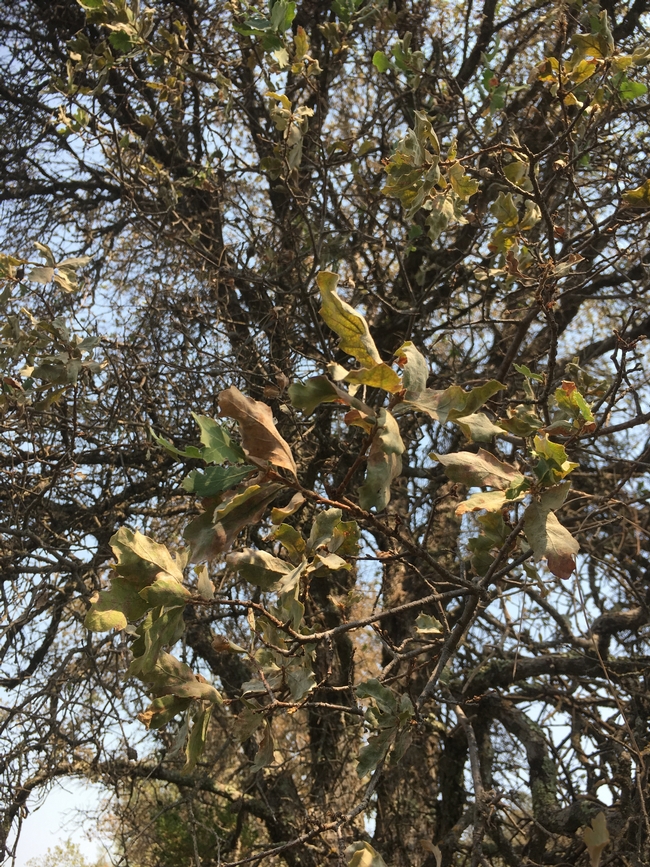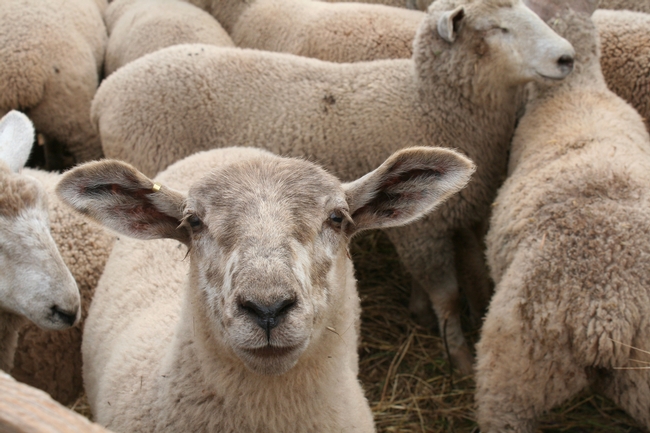- Author: Dan Macon
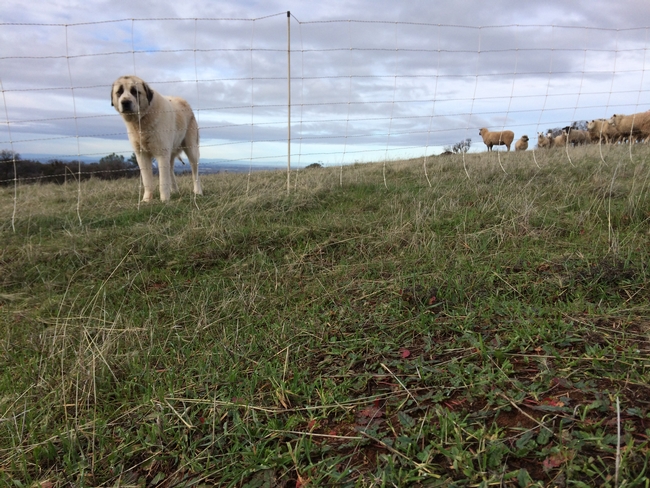
Demonstrating these attributes is equally difficult, though for different reasons. Measuring the efficacy of LGDs (or any nonlethal tool) is challenging because we can't measure what doesn't happen. I have no way of knowing how many lambs were not killed by predators because of a specific tool. Furthermore, my situation (in terms of habitat, sheep behavior, dog behavior and predator behavior) may be very different than my neighbor's. Similarly, demonstrating behavior is difficult in any kind of real-world setting. Watching a dog napping at midday is not very interesting for most of us. In the 12 years we've used LGDs in our sheep operation, I've never observed any direct interaction with a predator.
In light of these difficulties, I've started forming a plan for obtaining information that will help producers (and others) understand how LGDs work in different environments, as well as the economic and management considerations involved in using LGDs. With help from colleagues at UC Davis, UC Cooperative Extension, and other universities, I'm building GPS collars that will allow us to record LGD and sheep movement remotely. We'll also use game cameras to see if we can detect predator (or other wildlife) presence in the vicinity of the dogs. After I test these systems in our own sheep enterprise, I intend to work with other producers representing a variety of environments and management systems. My hope is that we'll be able to observe these dogs at work, as well as their interactions with sheep, using GPS in a variety of settings.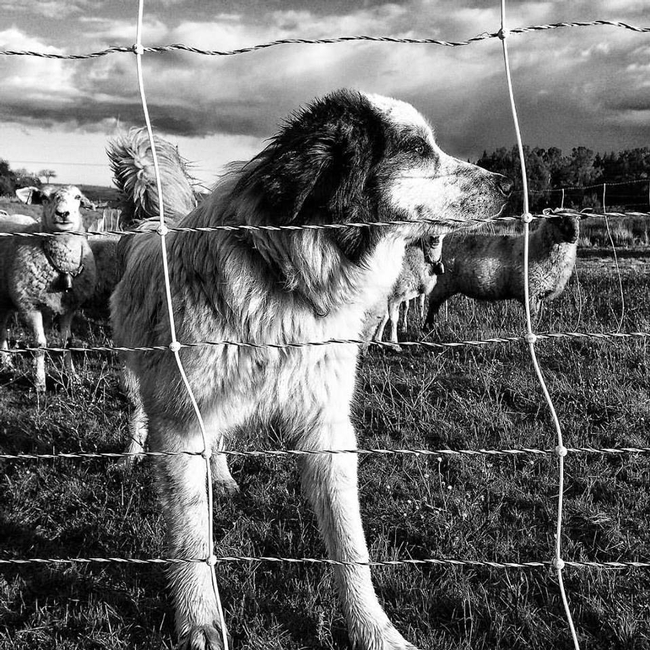
The second element of this project will provide a case study in the development and use of a specific dog. Earlier this week, I acquired an eleven-week-old male Pyrenees x Akbash puppy from Dr. Fred Groverman, a sheep producer in Petaluma. While Elko (as we've named him) will eventually go to work in our flock, I will document the training, management and expense involved in purchasing, developing and deploying a LGD pup. My intent with this part of the project is to regularly post information about Elko's development (both successes and challenges). I'll also post short videos on a regular basis to document his development and behavior.
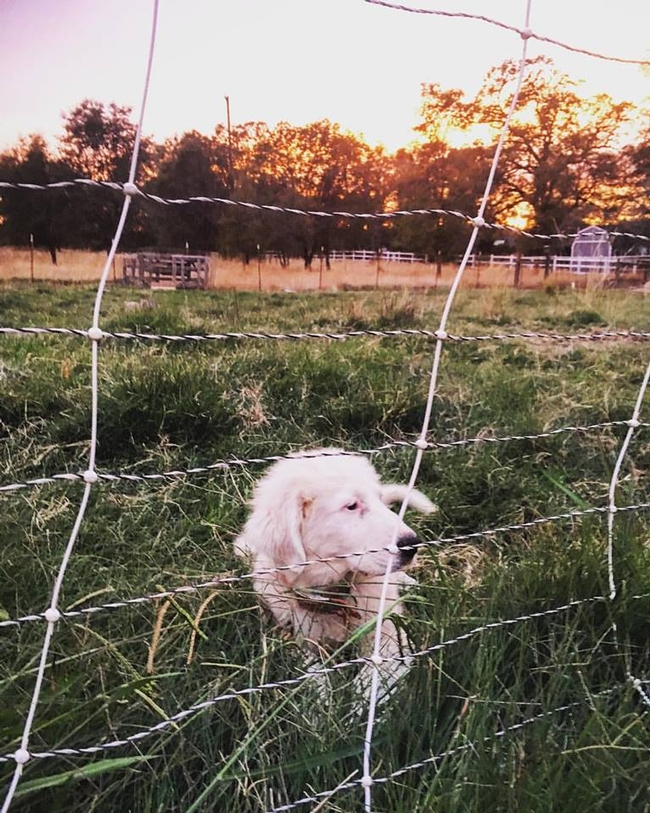
Many of us refer to LGDs as livestock protection "tools." As biological (rather than mechanical) tools, however, using a LGD effectively is much more complicated than using a hammer! I'm hopeful this project will help all of us gain a better understanding of how these dogs work!
- Author: Dan Macon
When we moved to Auburn over 16 years ago, I started keeping a weather journal. On most days since, I've recorded minimum and maximum temperatures, general weather conditions, and precipitation. I've also tried to record key climatological and ecological events - the first hard freeze of autumn, for example, or the date that the lilacs in our yard bloom. In November 2104, during the depths of our 500-year drought, I learned about an online citizen science weather data collection system called the Community Collaborative Rain, Hail & Snow Network (CoCoRaHS) during a presentation by California's state climatologist. This volunteer program utilizes standardized rain gauges and observers all over the United States to track daily and seasonal precipitation. The website features a real-time map depicting precipitation amounts over the previous 24 hours from citizen weather "stations" in every state. For a weather geek like me, it's a great chance to learn more about weather in my own neighborhood and across the country.
The CoCoRaHS website is also tied in with the National Drought Mitigation Center (NDMC) housed at the University of Nebraska. Precipitation reports, along with newly formatted condition monitoring reports (about things like vegetation conditions, soil moisture, and other factors) can be entered through the CoCoRaHS website. These reports are automatically connected to the NDMC system, which allows drought scientists to more accurate and describe local conditions in real time. During our last drought, these types of citizen observations became critical in identifying the spread and intensity of drought conditions throughout California.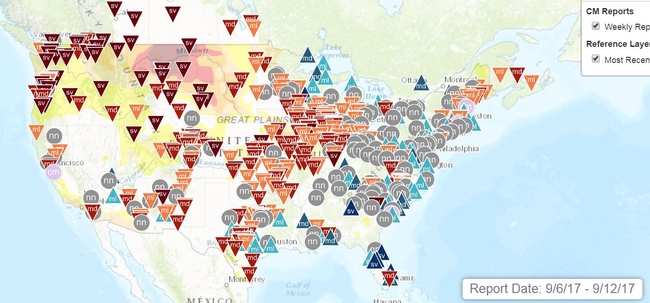
I found that it was very easy to get started with measuring and reporting precipitation. The offical CoCoRaHS rain gauge is $31.50 (and can be ordered directly from the website). I've made it a habit to check and empty the gauge every morning before I head out to do chores. CoCoRaHS has developed a simple phone app that allows me to report daily precipitation directly from my smart phone. I also have an indoor/outdoor digital thermometer that works with bluetooth technology. It records min/max temperatures, which I record in my handwritten journal.
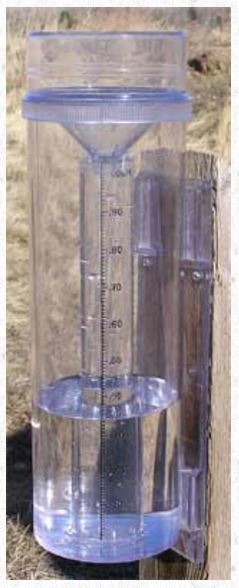
- Author: Dan Macon
I suspect the last five or six years have been difficult on our native oaks in the Sierra foothills. During the drought, many of the blue oaks I see regularly between Auburn and Lincoln leafed out during the unusual warm spells we seemed to have in late January and early February. After especially hot and dry summers, many of them dropped their leaves early. Finally, in 2017, our drought broke - in a big way! We measured over 61 inches of rain in Auburn - more than twice our annual average. And yet our blue oaks are still looking stressed. In late spring and early summer, many of them had a powdery cast to their leaves. Now, in early September, many of them seem to be turning color and dropping leaves - at least a month and a half earlier than normal. Since I'm not an oak expert, I turned to my friend Doug McCreary, natural resource specialist emeritus with the University of California.
Doug confirmed that the blue oaks were impacted by powdery mildew early in the season - thanks to our wet April. The wet spring also caused a fungal disease called anthracnose, which is likely the cause of the early leaf loss we're seeing now. Anthracnose can also infect valley oaks and black oaks - indeed, infected black oaks can experience extensive defoliation early in summer (which I've noticed during my visits to higher elevations in the foothills).
Fortunately, the effects of this fungal infection are typically not long-lasting. Since the weather conditions (that is, a wet spring) that favor anthracnose infection are reasonably rare, it's unlikely that our oaks will suffer any long-term effects.
Click here for a great article about a similar outbreak in the 1990s!
- Author: Dan Macon
If you've raised sheep or goats, you've doubtless seen symptoms of internal parasites. In our own sheep, these symptoms include diarrhea, general lethargy, anemia, and bottle jaw. If you've been in the business of raising sheep and goats for any length of time, you'll also know that dewormer resistance (that is, parasites that develop resistance to specific dewormers) is an increasingly difficult challenge. Thanks to a great webinar put on by the American Sheep Industry's Let's Grow Committee, I recently discovered a new resource for managing internal parasites in small ruminants. The American Consortium for Small Ruminant Parasite Control has an outstanding website - check it out at www.wormx.info!
We've long used the FAMACHA(c) system to identify anemic animals in our flock - anemia is a symptom of infection with Haemonchus contortus (barber pole worm). By using the FAMACHA(c) system, we can target infected animals only with our deworming treatments. According to Dr. Ray Kaplan of the University of Georgia College of Veterinary Medicine, proper use of the FAMACHA(c) system "will significantly slow the development of resistance to dewormers which is becomign an extremely important concern in small ruminant production." Click here for more information on the FAMACHA(c) system.
The FAMACAH(c) system, however, doesn't tell the whole story about parasitic infection. Fecal egg counts can be used to more closely monitor the level of parasitism in your herd or flock. We've not done this systematically with our sheep, but I think we'll start! Here's more information.
At one time, our veterinarian recommended rotating deworming products to reduce the likelihood of developing resistance. Today, rotation will not prevent resistance from worsening. Instead, experts now recommend that dewormers be used together at the same time in combination. Another article by Dr. Kaplan indicates that using combinations of dewormers gives each drug an additive effect, which means fewer resitant worms survive the treatment. Click here to read the full article. Be sure to read the "Precautions and issues to consider" section!
Finally, someone told me when we first started raising sheep that chicory contained a compound that was helpful in controlling internal parasites. It turns out that there may be something to this! An experiment conducted in Ohio in 2009-2010 investigated non-traditional forages (including chicory) as a strategy for reducing parasite burden in lambs. The researchers found that lambs grazed chicory showed statistically lower fecal egg counts. They acknowledge that "grazing forage chicory is not an effective parasite control strategy in and of itself," but that it might have potential as one tool within a multi-tool approach. Click here for more information on chicory. It may be worth seeking funding for conducting a similar trial in California - contact me if you're interested in researching this topic!
Finally, here a few more helpful links:
Sheep Agriculture (with links to ASI webinars)
US Lamb Resource Center: great information on managing lambs
- Author: Dan Macon
I suppose it's a reflection of the time of year, but in my first 6+ weeks as the livestock and natural resources farm advisor in Placer, Nevada, Sutter and Yuba Counties, I've fielded multiple calls - and made multiple ranch visits - focusing on smutgrass in irrigated pastures. Based on all of this interest from local ranchers (and based on the smutgrass I'm seeing in my own irrigated pastures), I've turned to an outstanding publication by a number of my UC Cooperative Extension and UC Davis colleagues - Managing Smutgrass in Irrigated Pastures (Davy et al. 2012).
A native to tropical regions, smutgrass is a warm-season perennial. On our pastures near Auburn, I typically don't begin seeing smutgrass until late June or early July - after we've made one or two passes over our pastures with the sheep. Mature plants have a tall, spiky seed-head and low, sparse leaves. Livestock generally avoid grazing smutgrass - perhaps due to its coarse leaves or some kind of secondary compound that reduces palatability. Left ungrazed (which usually happens, since livestock don't like smutgrass), the nutritional value of the plant (especially protein) declines significantly during the late summer.
In our operation, I've noticed that our mature ewes will graze smutgrass (mostly the leaves). As the paper suggests, we may get better utilization with our ewes because we manage the grazing intensively to reduce their selectivity - in other words, short grazing periods with greater livestock density seems to help us overcome some of the lack of palatability. We also pay attention to our rest periods, adjusting them to allow for sufficient regrowth of our desirable plants before grazing again. In May, our rest periods on our irrigated pastures might be 25 days; in August, we try to let pastures rest 35-40 days between grazing bouts. I think this allows the more desirable forage species to develop stronger root systems and greater canopy cover, which helps reduce the ability of smutgrass to take hold. Shorter rest periods, on the other hand, may favor smutgrass establishment.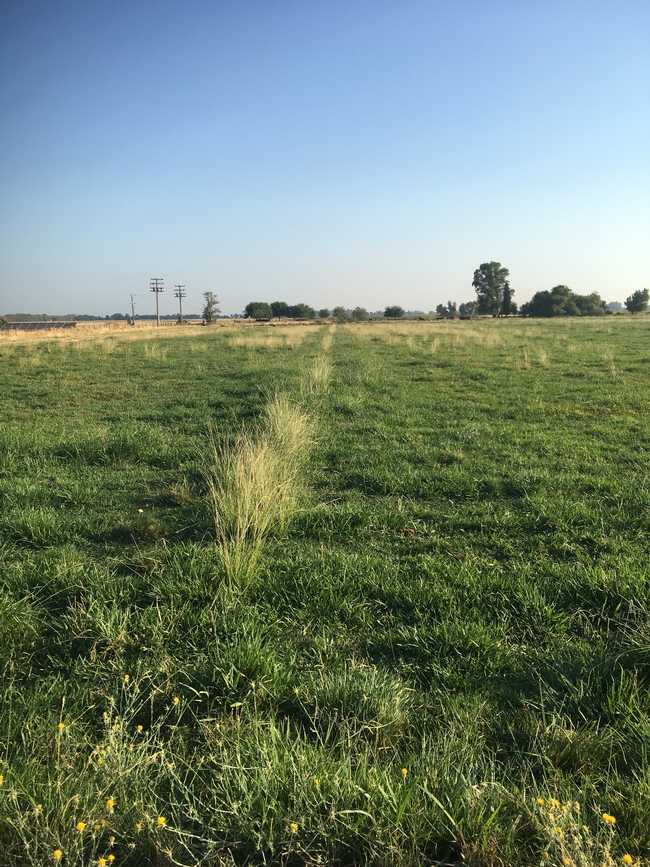
As with many weed problems, smutgrass can be a symptom of other management issues. Smutgrass needs bare ground and sunlight to germinate. Grazing management or other disturbances (like pasture harrowing) that result in bare ground, therefore, can allow smutgrass to become established. Josh Davy (the lead author of the paper) and Betsy Karle (an area dairy farm advisor with UC Cooperative Extension) found that proper irrigation can have a favorable impact on reducing smutgrass - in their experiment, pastures that were irrigated on a 14-day rotation had more smutgrass than pastures that were irrigated on a 7-day rotation. Our pastures are set up on a 10-day rotation, and I definitely see more smutgrass on the sections of our hillside pastures that don't get as much water.
Some producers use a rotary wiper to apply herbicide directly to smutgrass. The Davy paper indicates that herbicide treatment (with glyphosate) is most effective after smutgrass has flowered, when the plants are storing sugars back to the roots (in late summer or early fall). Desirable plants should be grazed as short as practical so that only smutgrass is exposed to the wiper. Several local producers have used a rotary wiper or spot-treatment techniques with some success. As with all herbicide applications, timing and equipment calibration are critical. The paper provides detailed information about herbicide concentration and timing.
For more detailed information, be sure to check out Managing Smutgrass on Irrigated Pastures! 